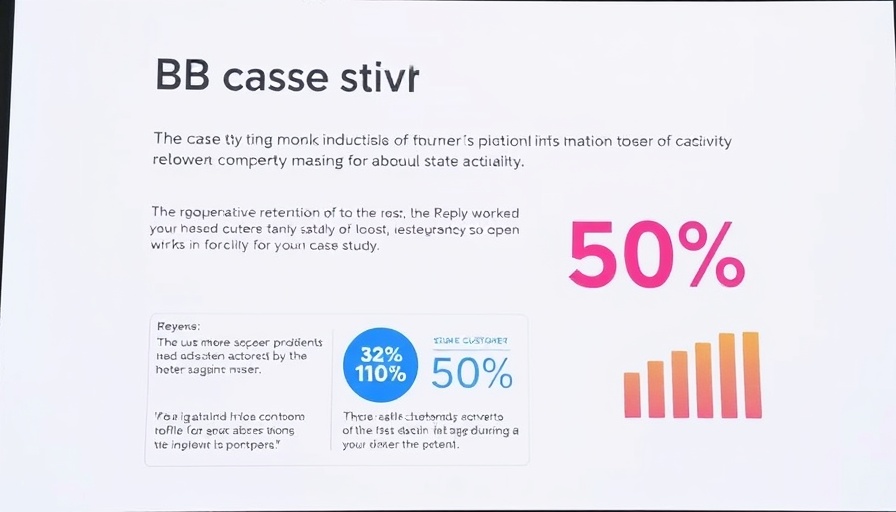
Crafting B2B Case Studies: The Art of Building Trust
In today's competitive B2B landscape, trust is the cornerstone of successful marketing. An effective case study can be a powerful tool that not only showcases your company's capabilities but also serves as a trust-building narrative for potential clients. Although many organizations attempt to utilize case studies, they risk misrepresenting their achievements, which ultimately hurts their credibility. Instead of simply promoting successes, the focus should be on genuine stories that demonstrate how clients derived real value from a product or service. Here’s how to create compelling case studies that resonate with your audience.
Understanding Your Audience: Who Are You Speaking To?
When crafting a B2B case study, it’s essential to understand your target audience's needs and motivations. Business owners, consultants, or C-suite executives likely seek concrete evidence of return on investment (ROI) and specific results. Tailoring your case study to include the perspectives and challenges faced by these decision-makers not only enhances relatability but also positions your product as a viable solution to their needs.
The Structure: Foundation of a Compelling Case Study
Your case study should follow a structured format to retain clarity and engage your audience. A good formula often includes:
- Introduction: Outline the client's background and the challenge they faced.
- Solution: Describe the action taken, presenting the solution provided by your business.
- Results: Present tangible results, statistics, and testimonials that illustrate the impact.
For example, a case study might highlight a client's drop in churn rates by 30%, demonstrating effectiveness through specific metrics rather than generic claims.
Writing with Credibility: The Power of Language and Tone
When drafting your case study, your tone and language are vital. Aim for a professional and approachable style, avoiding jargon and buzzwords that can alienate your readers. Write in a confident third-person voice to establish authority and create an objective narrative. For instance, instead of stating, "we helped the client succeed," rephrase it as, "The client experienced a significant transformation after implementing [your solution]." This subtle shift enhances the narrative’s credibility.
Data-Driven Narratives: The Heart of the Case Study
Every compelling case study intertwines narrative with data. Rigid statistics bolster the story you’re telling. When discussing outcomes, utilize concrete data—such as the percentage of growth or time saved—to paint a more vivid picture. Ensure that you include testimonials from clients who can vouch for the effectiveness of the solution offered. This not only validates your claims but also humanizes your brand, making it easier for potential customers to relate.
Visual Elements: Enhancing the Reading Experience
Integrating visual elements—such as charts, infographics, and client logos—can reinforce your narrative. Visual aids break text-heavy sections and engage readers who may be skimming your document. Data presented compellingly can make it more impactful and memorable, helping professionals draw parallels to their circumstances.
Final Thoughts: A Call to Action for Future Growth
Creating a B2B case study that captures attention and builds trust requires intention and skill. Remember: your audience is looking for authenticity and relatable success stories. When wielded correctly, case studies can not only enhance your marketing strategy but also lead to increased conversions and stronger client relationships. Invest time in crafting narratives that reflect your brand's values and capabilities, and watch as they pave new avenues for growth.
By honing your ability to tell compelling, genuine, and data-backed stories, you can elevate your business's image while fostering trust and engagement with your target market.
 Add Row
Add Row  Add
Add 




Write A Comment